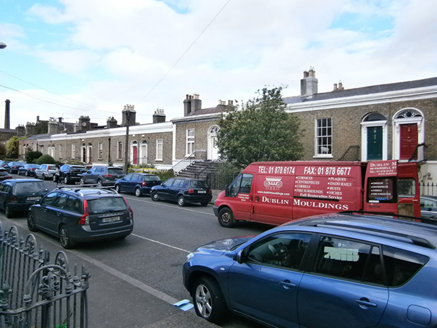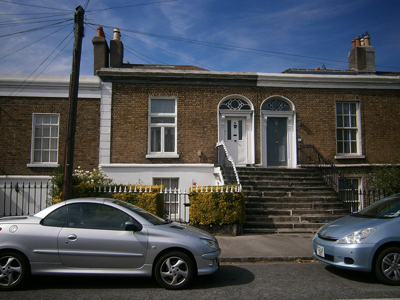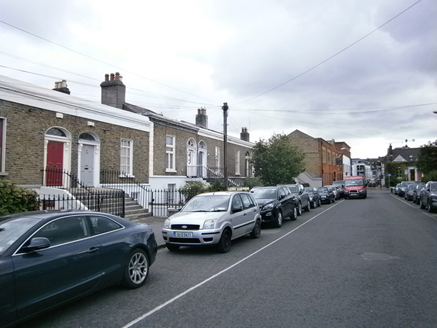Survey Data
Reg No
50110295
Rating
Regional
Categories of Special Interest
Architectural, Artistic
Original Use
House
In Use As
House
Date
1850 - 1860
Coordinates
315450, 233060
Date Recorded
16/05/2017
Date Updated
--/--/--
Description
Terraced two-bay single-storey house over raised basement, built c. 1855, as one of terrace of four. M-profile pitched slate roof, rendered chimneystack with clay pots, rendered parapet and cornice. Yellow brick, laid in Flemish bond, to walls, having render quoins, cut granite plinth course over rendered wall to basement. Square-headed window openings with granite sills, rendered reveals, replacement window at ground level and original six-over-three pane timber sliding sash window to basement-level. Elliptical-headed door opening having moulded render surround, and timber doorcase comprising panelled pilasters and foliate console brackets supporting stepped cornice. Replacement door, roundel and petal fanlight. Shared granite steps with bootscrape to platform and cast-iron coal-hole cover to wide eighth step. Basement area bounded by granite plinth wall surmounted by wrought-iron railings having decorative cast-iron collars and finials. Curved alignment to main entrance steps. Matching gate, plinth wall underneath truncated. Square-headed door to basement, beneath entrance steps. Set back from road, with basement-level front garden.
Appraisal
This house retains its traditional façade composition and features, including its door surround, which are characteristic of its mid-nineteenth-century date. The shared scale and proportions of these genteel townhouses contribute to the unified character of the locality. The subtle design variations in the building elements such as the railings, coal-hole covers and fanlights, along with the small change in building elevation, sets this terrace (Nos. 11-14) apart from other phases of development along the street and provides an attractive individuality. The streetscape is further enhanced by the retention of elegant iron railings. This street forms part of early Victorian neighbourhood located to the west of Camden Street. The street is named after the philanthropist Thomas Pleasants (1729-1818) who donated money towards the establishment of the nearby Meath Hospital. This terrace was built during a later phase of development of the street.





